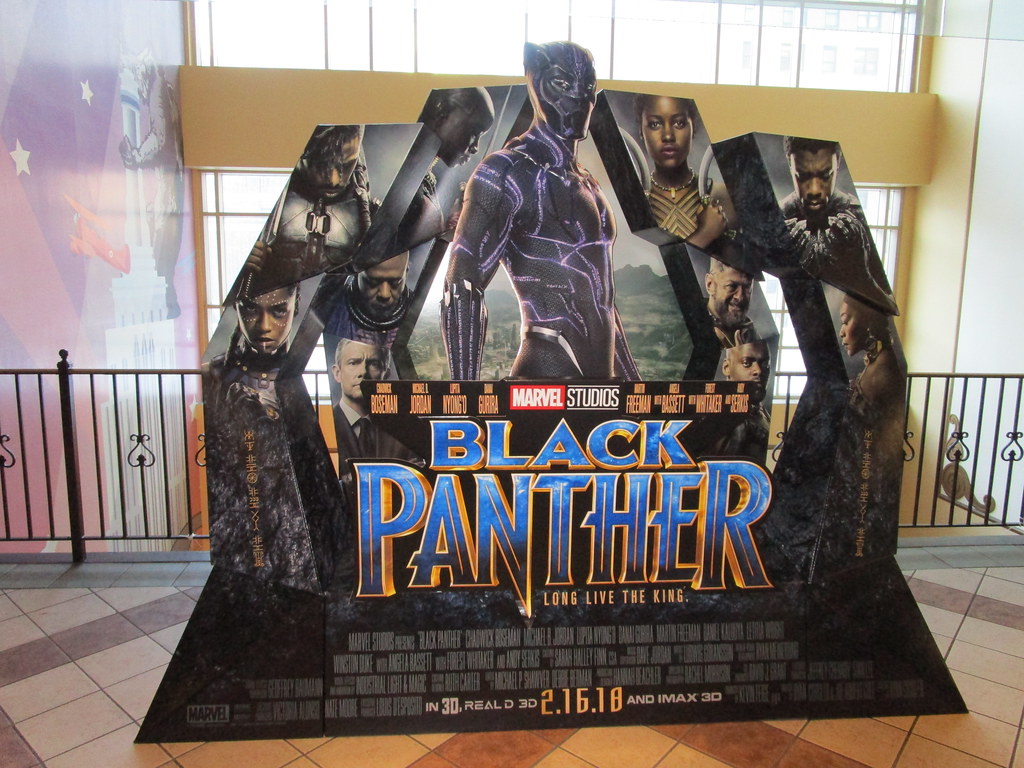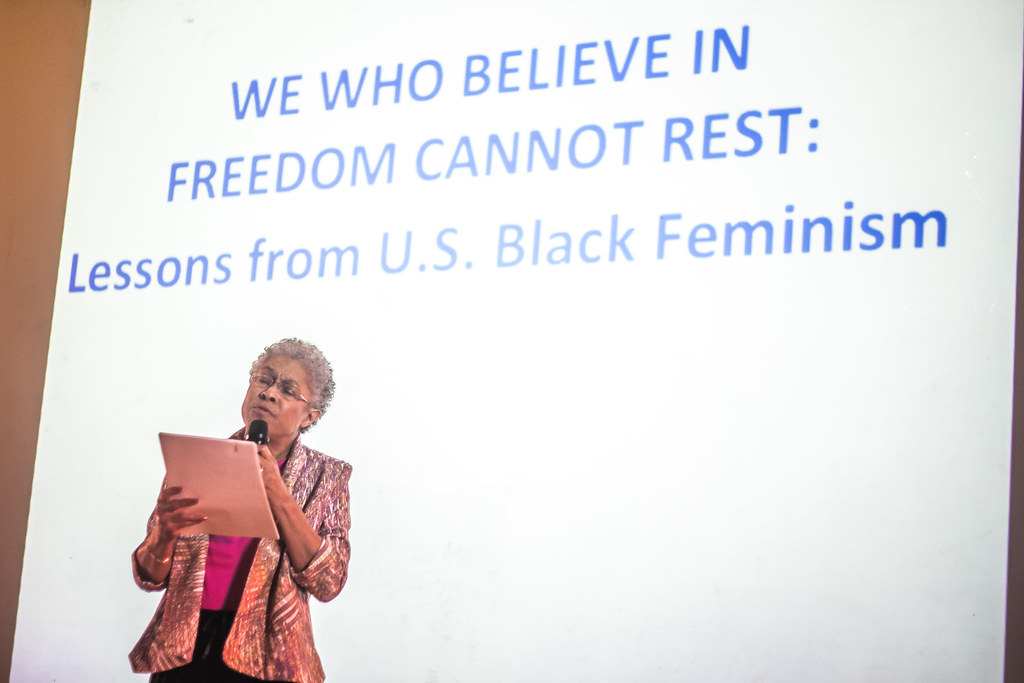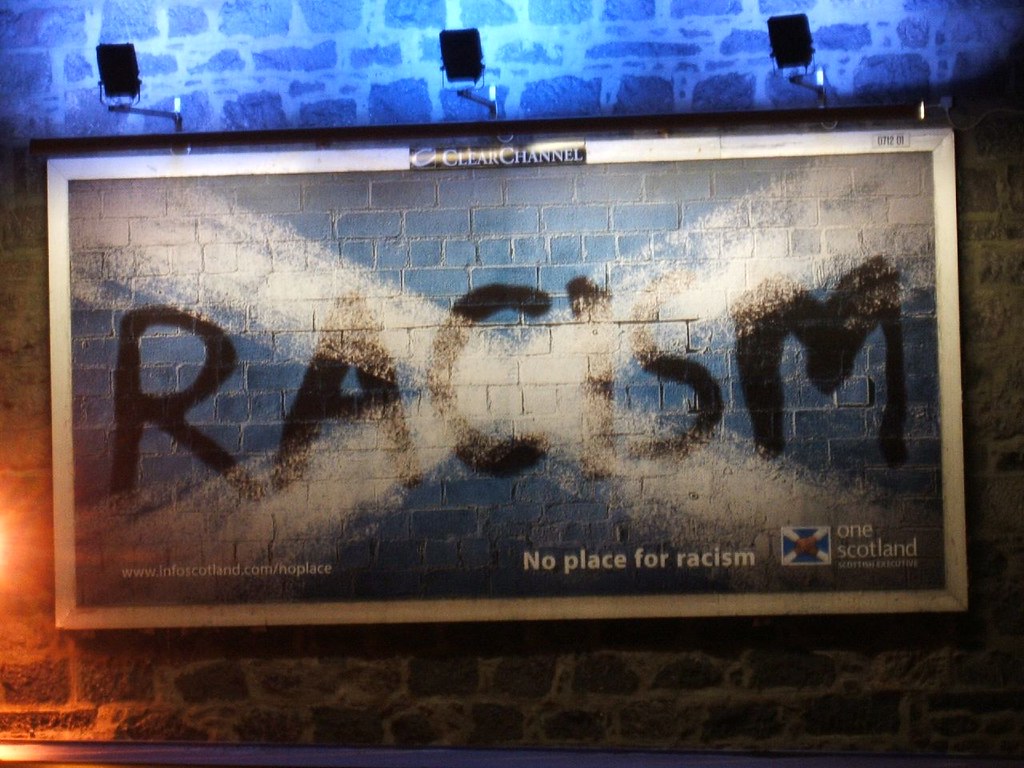2.2: Sociological Theoretical Perspectives
- Last updated
- Save as PDF
- Page ID
- 104041

- Erika Gutierrez, Janét Hund, Shaheen Johnson, Carlos Ramos, Lisette Rodriguez, & Joy Tsuhako
- Long Beach City College, Cerritos College, & Saddleback College via ASCCC Open Educational Resources Initiative (OERI)
We can examine issues of race and ethnicity through five different sociological perspectives: functionalism, conflict theory, symbolic interactionism, intersection theory, and critical race theory. As you read through these theories, ask yourself which one makes the most sense and why. Do we need more than one theory to explain racism, prejudice, stereotypes, and discrimination?
| Sociological Paradigm | Level of Analysis | Focus |
|---|---|---|
| Structural Functionalism | Macro or Mid | The way each part of society functions together to contribute to the whole. Practices and policies may lead to dysfunction. |
| Conflict Theory | Macro | The way inequalities contribute to social differences and perpetuates racial and ethnic disparities in power. |
| Symbolic Interactionism | Micro | One-to-one interactions and communications. The meaning attached to racial an ethnic labels and images. |
| Intersection Theory | Multi | The way multiple social categories such as race, gender, class, sexuality, intersect to produce unique forms of discrimination and oppression. |
| Critical Race Theory | Multi | Centering race in the examination of social phenomena and inequality. |
Functionalism
In the view of functionalism, racial and ethnic inequalities must have served an important function in order to exist as long as they have. This concept, of course, is problematic. How can racism and discrimination contribute positively to society? A functionalist might look at “functions” and “dysfunctions” caused by racial inequality. Nash (1964) focused his argument on the way racism is functional for the dominant group, for example, suggesting that racism morally justifies a racially unequal society. Consider the way slave owners justified slavery in the antebellum South, by suggesting Black people were fundamentally inferior to white and preferred slavery to freedom.
According to Robert Merton, the manifest functions of social institutions and their policies are intended to produce beneficial outcomes. The latent functions of social institutions and their policies are not deliberate or intended but still produce beneficial outcomes. For example, while it is not an intended outcome, schools in an urban community may lead to an increase in interracial friendships and relationships, which is a beneficial outcome for the larger community and society. According to Merton, a dysfunction would be considered a harmful latent outcome of an institutional policy or practice. For example, New York City's "Stop-and-Frisk" policy was intended to provide police officers with more latitude in questioning and apprehending potential criminals. However, the policy led to a disproportionate stopping and detention of Black and Latinx men and ultimately deemed as unconstitutional by the courts. In addition to unfair racial harassment, latent dysfunction would also include a growing distrust in the police and racial minorities feeling unsafe in their own neighborhoods.
Another way to apply the functionalist perspective to racism is to discuss the way racism can contribute positively to the functioning of society by strengthening bonds between in-groups members through the ostracism of out-group members. Consider how a community might increase solidarity by refusing to allow outsiders access. On the other hand, Rose (1951) suggested that dysfunctions associated with racism include the failure to take advantage of talent in the subjugated group, and that society must divert from other purposes the time and effort needed to maintain artificially constructed racial boundaries. Consider how much money, time, and effort went toward maintaining separate and unequal educational systems prior to the Civil Rights Movement.
Conflict Theory
Conflict theories are often applied to inequalities of gender, social class, education, race, and ethnicity. A conflict theory perspective of U.S. history would examine the numerous past and current struggles between the white ruling class and racial and ethnic minorities, noting specific conflicts that have arisen when the dominant group perceived a threat from the people of color. In the late nineteenth century, the rising power of Black Americans after the Civil War resulted in draconian Jim Crow laws that severely limited Black political and social power. For example, Vivien Thomas (1910–1985), the Black surgical technician who helped develop the groundbreaking surgical technique that saves the lives of “blue babies” was classified as a janitor for many years, and paid as such, despite the fact that he was conducting complicated surgical experiments. The years since the Civil War have showed a pattern of attempted disenfranchisement, with gerrymandering and voter suppression efforts aimed at predominantly minority neighborhoods.
In her split labor market theory, conflict theorist Edna Bonacich (1972) proposed that ethnic antagonism often has economic underpinnings because the capitalist owners of the means of production would prefer to pay workers from a particular ethnic group lower wages than workers from a dominant ethnic group. According to Bonacich, this will naturally lead to resentment and ethnic antagonism between these groups of workers. The split labor market benefits the capitalist class because it lowers production costs (therefore increasing profit margins) and also has the added benefit of maintaining a divided (and therefore unorganized) labor force. According to this framework, the split labor market would help to explain the ethnic antagonism that exists between white workers in the United States and undocumented workers from Latin America.
Symbolic Interactionism
For symbolic interactionists, race and ethnicity provide strong symbols as sources of identity. In fact, some interactionists propose that the symbols of race, not race itself, are what lead to racism. Famed interactionist Herbert Blumer (1958) suggested that racial prejudice is formed through interactions between members of the dominant group. Without these interactions, individuals in the dominant group would not hold racist views. These interactions contribute to an abstract picture of the subordinate group that allows the dominant group to support its view of the subordinate group, and thus maintains the status quo. An example of this might be an individual whose beliefs about a particular group are based on images conveyed in popular media, and those are unquestionably believed because the individual has never personally met a member of that group. Another way to apply the interactionist perspective is to look at how people define their race(s) and the race of others. As discussed in Chapter 1.2 with regards to the social construction of race, since some people who claim a white identity have a greater amount of skin pigmentation than some people who claim a Black identity, how did they come to define themselves as Black or white?
Thinking Sociologically
How might a symbolic interactionist analyze the characters in the film "Black Panther"? In what ways might the film and characters challenge racist and negative stereotypes? Do you think films like "Black Panther" have the potential to change society? Why or why not?
Culture of prejudice refers to the argument that prejudice is embedded in our culture. We grow up surrounded by images of stereotypes and casual expressions of racism and prejudice. Consider the casually racist imagery on grocery store shelves or the stereotypes that fill popular movies and advertisements. It is easy to see how someone living in the Northeastern United States, who may know no Mexican Americans personally, might gain a stereotyped impression from such sources as Speedy Gonzalez or Taco Bell’s talking Chihuahua. Because we are all exposed to these images and thoughts, it is impossible to know to what extent they have influenced our thought processes.

Symbolic interactionists also focus on the process of labeling - the meanings attached to labels and their social consequences. The social construction of race is reflected in the way names for racial categories change with changing times. It’s worth noting that race, in this sense, is also a system of labeling that provides a source of identity; specific labels fall in and out of favor during different social eras. A symbolic interactionist might say that this labeling has a direct correlation to those who are in power and those who are labeled. For instance, if a teacher labels their students as either "intelligent and motivated" or "slow and lazy" based on racial and ethnic stereotypes, this could impact interactions in the classroom and may also lead to an internalization of those stereotypes and lower academic performance (Rist, 1970; Steele, 2010). Indeed, as these examples show, labeling theory can significantly impact a student’s schooling.
Intersection Theory

As discussed in Chapter 1.5, Black feminist sociologist Patricia Hill Collins (1990) developed intersection theory, which suggests we cannot separate the effects of race, class, gender, sexual orientation, and other attributes. When we examine race and how it can bring us both advantages and disadvantages, it is important to acknowledge that the way we experience race is shaped, for example, by our gender and class. Multiple layers of disadvantage intersect to create the way we experience race. For example, if we want to understand prejudice, we must understand that the prejudice focused on a white woman because of her gender is very different from the layered prejudice focused on a poor Asian woman, who is affected by stereotypes related to being poor, being a woman, and her ethnic status.
"Intersectionality is not just a form of inquiry and critical analysis but necessarily also a form of praxis that challenges inequalities and opens a collective space for both recognizing common threads across complex experiences of injustice and responding to them politically" (Ferree, 2018). Using an intersectional lens to analyze social systems, it is useful to consider how capitalism, racism, sexism, heterosexism, ageism, and/or ableism intertwine to stratify society and impact life chances for individuals and groups. Collins & Bilge (2020) combine the critical inquiry into inequalities and stratification with critical praxis to advance social justice. Thus, intersectionality is not only a lens and theory but also a potential solution to social problems, reminding sociologists that the many status intersections of race, social class, gender, sexuality, age and/or disability should be considered when seeking remedies to social ills.
Check out this video of Kimberlé Crenshaw explaining the premise of intersectionality:
Video \(\PageIndex{4}\): Professor Kimberlé Crenshaw Defines the Urgency of Intersectionality. (Close-captioning available on Ted.com.)
Critical Race Theory
According to proponents of critical race theory, race has been structured into the functions, systems and social institutions of our society. Gloria Ladson-Billings and William Tate (1995) laid the justification for considering a critical race theory of education. “Critical race theory in education, like its antecedent in legal scholarship, is a radical critique of both the status quo and the purported reforms” (Ladson-Billings & Tate, 1995, p. 62). Delgado and Stefancic (2001) provided a foundational understanding of critical race theory by considering the following six elements:
1. “racism is ordinary, not aberrational” (p. 7)
2. “white over color ascendancy serves important purposes, psychic and material” (p. 7)
3. the social construction of race
4. racialization
5. intersectionality
6. unique voices from people of color
To consider racism as normal, not deviant or an aberration, implies that race is normalized as business as usual in our social structures such as our schools, housing patterns, the workplace, politics, mass media including television and social media, sports, the criminal justice system, and so on. This resulting racial hierarchy has benefited (white) elites (materially) and the working class (psychically), according to Delgado and Stefancic (2001). For example, social justice policies (e.g. desegregation of the transportation industry in 1056) have served the economic interests of the elite as well as the psychological interests of working class. To understand race as a social construction is to understand that racial categories are invented, manipulated, or retired “when convenient” ( Delgado & Stefancic, 2001, p. 7). Though actively involved in the social construction of race, society ignores or is not taught that racial categories are subjective, not fixed, and not based on facts, as explained in Chapter 1.2.
When individuals are racialized, they are stereotyped, minimized, often in the form or caricatures. Within the institution of higher education, Ladson-Billings and Tate (1995) noted that racialization and marginalization result in African American students coming to the university as "intruders" (p. 60). Further, Robin DiAngelo (2018) revealed that 84% of our college professors are white (p. 31). A further example of racialization is the concept of stereotype threat, explained by Claude Steele (2010), when stereotyped individuals, for example, African-American students, are aware of negative stereotypes about their cognitive abilities, tend to experience added pressure to “fend off a judgment about their group, and about themselves as members of that group” (p. 54).
Intersectionality, already explained earlier in this section, suggests that individuals are simultaneously members of many different, potentially competing or overlapping, identities including but not limited to race, gender, social class, national origin, religion, politics, and sexuality. This tenet can help to understand how the experiences of Black women and Latinas, for example, may vary if they are upper class and lesbian versus if they are working class and heterosexual. “If we pay attention to the multiplicity of social life, perhaps our institutions and arrangements will better address the problems that plague us” (Delgado & Stefancic, 2001, p. 56). Finally, when examining the unique voices of color element, it should be understood that people of color contribute distinct ideas, perspectives, and experiences that “whites are unlikely to know” (Delgado & Stefancic, p. 9). Further, these voices validate the perspectives of other people of color, which may diverge from the perspectives of the dominant group. For example, Ibram X. Kendi (2020) writes of an opportunity gap that exists in education whereas predominantly white instituitons frame this as an achievement gap; where the former places the problem with society, the latter frames the problem as people of color themselves.

Finally, critical race theorists pose a variety of social reforms. Rather than colorblind solutions, critical race theorists advocate for race-conscious solutions to race-based social ills. "The system applauds affording equality of opportunity but resists programs that assure equality of results" (Delgado & Stefancic, 2001, p. 23). For example, the institutional research performed by Janét Hund (2019) found when African American and Latinx community college students were taught by same race-ethnic faculty, their course completion rates were higher; this research suggests that hiring more African American and Latinx faculty would serve to improve the course completion rates for African American and Latinx colleges students.
Summary
Functionalist views of race study the role dominant and marginalized groups play to create a stable social structure. Conflict theorists examine power disparities and struggles between various racial and ethnic groups. Interactionists see race and ethnicity as important sources of individual identity and social symbolism. The concept of culture of prejudice recognizes that all people are subject to stereotypes that are ingrained in their culture. Intersectional theory reminds us to consider how race, gender, and social class not only impact our social structures and our social interactions but are also engrained within our social institutions. As a more radical critique of the status quo, critical race theory centralizes the focus on race to understand our history, our contemporary society, and our social structures - as well as solutions to inequality.
Contributors and Attributions
- Ramos, Carlos. (Long Beach City College)
- Gutierrez, Erika. (Santiago Canyon College)
- Hund, Janét. (Long Beach City College)
- Introduction to Sociology 2e (OpenStax) (CC BY 4.0)
Works Cited
- Blumer, Herbert. (1958, Spring). Race prejudice as a sense of group position. Pacific Sociological Review, Vol. 1, No. 3-7.
- Collins, P. & Bilge, S. (2020). Intersectionality (Key Concepts). 2nd ed. Cambridge, UK: Polity Books.
- Delgado, S. & Stefancic, J. (2001). Critical Race Theory. New York, NY: New York University Press.
- DiAngelo, R. (2018). White fragility: Why It’s So Hard for White People to Talk About Racism. Boston, MA: Beacon Press.
- Ferree, M.M. (2018). Intersectionality as theory and practice. Contemporary Sociology , 47(2), 127-132.
- Hund, J. (2020, Fall). Effect of same-race ethnic faculty on the course completion of students of color. Journal of Applied Research in the Community College, Vol. 27, No. 2.
- Kendi, I. (2020). How to Be an Anti-Racist. New York, NY: Random House.
- Ladson-Billings, G. & Tate, W. (1995, Fall). Toward a critical race theory of education. Teachers College Record, 97(1), 47-68.
- Nash, M. (1964). Race and the ideology of race. urrent Anthropology 3(3): 285-288.
- Rist, R. (1970). Student social class and teachers' expectations: The self-fulfilling prophecy of ghetto education. Harvard Educational Review. Vol. 40, No. 3.
- Rose, A. (1958). The Roots of Prejudice. 5th Edition. Paris, France: UNESCO
- Steele, C.M. (2010). Whistling Vivaldi: How Stereotypes Affect Us and What We Can Do. New York, NY: W.W. Norton & Company, Inc.

